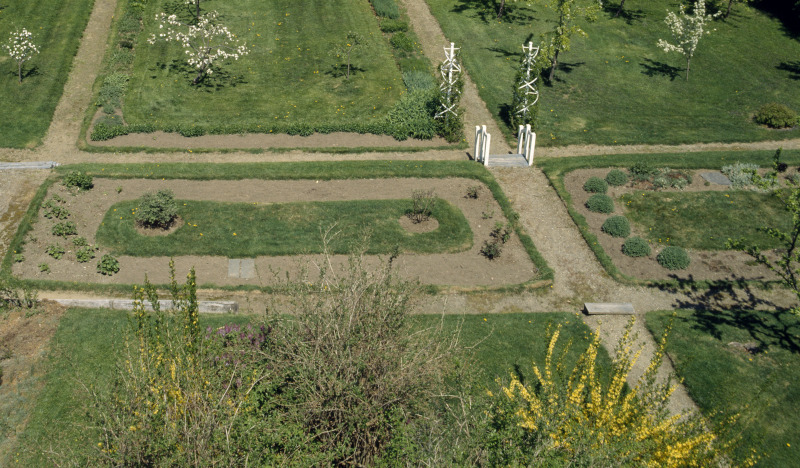 Rundlet-May House
Rundlet-May House
Sources of Influence on the Landscape
Little is known about what gardening books, if any, the Rundlets owned when building the house, but in 1806 American Gardener’s Calendar was published by Bernard McMahon and was influential to many who were building gardens on a grand scale for their estates. There were many precedents before that which may have influenced the geometric plan, though there is no clear link to any specific landscape design that would have served as a primary influence.

The terraced garden at Rundlet-May House was designed with regimented walkways and a prevailing grid plan punctuated with fruit trees, flower beds, and open space. Many French garden designs feature similarly regimented pathways, axials, and clearly delineated planted sections with the house as a central focus, as do some English gardens of the seventeenth and eighteenth century, and those dating from the Medieval period in Europe. Strong axials were also often prominent in Islamic and Mughal garden design and complemented by complex water features.
Like so many gardens of the eighteenth and nineteenth century in America, the Rundlet’s garden was full of scents and plant varieties that could be used to ward of unwanted odors of everyday life, as well as fruit to be canned, preserved, and used for cooking in a number of ways. Nothing was considered as wasted or unwanted material in the garden of that time period; everything had a purpose and the practical mixed with the pleasure garden at once.